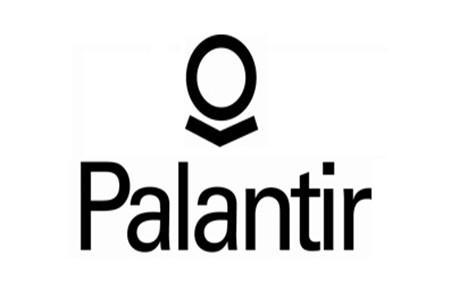Palantir Technologies Inc.(PLTR.US)2025年第一季度业绩电话会
文章语言:
简
繁
EN
Share
Minutes
原文
会议摘要
Palantir Technologies reported a 39% revenue growth in Q1 2025, with US revenue increasing by 55% and comprising 71% of the business. US commercial revenue surpassed the billion-dollar annual run rate for the first time, growing by 71% year-over-year, while government business saw a 45% revenue growth. The company attributes its success to growing demand for AI production use cases, particularly in defense, healthcare, finance, and government software offerings. Despite international commercial revenue decline due to European headwinds, Palantir is capitalizing on growth opportunities in Asia and the Middle East. The company raised its full-year 2025 revenue guidance midpoint to $3.896 billion, representing a 36% year-over-year growth rate, and emphasized its unique ability to deliver on AI demand through ontology and infrastructure investments.
会议速览
Palantir reports a 39% year-over-year revenue growth in Q1 2025, with US revenue accounting for 71% of the total business. US commercial revenue surged 71%, and US government revenue grew 45%. The company's Rule of 40 score increased to 83, demonstrating strong financial health. Amid economic uncertainties, organizations increasingly turn to Palantir for solutions to adapt and overcome challenges.
The company experiences significant growth and revenue increase by enabling customers to effectively utilize advanced AI models, leading to substantial deals and transformative impacts in various sectors including healthcare, finance, and defense.
The company emphasizes its focus on AI demand, highlighting its unique position to deliver enterprise autonomy through AI agents that significantly enhance productivity. By leveraging ontology and infrastructure investments, the platform enables users to build, test, and deploy AI agents for various applications, from defense and manufacturing to healthcare, demonstrating transformative impacts in multiple sectors. Notably, the US business experiences rapid growth, driven by innovations like the Titan vehicles and the Maven Smart System, which are reshaping military operations and decision-making processes.
The company experienced a significant first quarter with revenue growth accelerating to 39% year over year, surpassing guidance by 350 basis points. Key milestones include exceeding a billion-dollar annual run rate in the US commercial business, growing 71% year over year, and raising full-year 2025 revenue guidance to represent a 36% year over year growth rate. The adjusted operating margin increased by 800 basis points to 44%, and the adjusted free cash flow reached 370 million, marking a 42% margin. Customer count also grew by 39% year over year to 769 customers.
The company reports significant revenue growth, particularly in its commercial segment, with a 33% year-over-year increase and achieving a $1 billion annual run rate in the US commercial business. Government revenue also grew by 45% year over year. Strategic commercial contracts and international commercial revenue faced declines, while investments in AI production use cases and technical hiring continue to drive expenses. The outlook for Q2 2025 and the full year includes raised revenue and adjusted income from operations guidance, reflecting the accelerating demand for AI solutions.
Palantir experiences a significant 71% growth in the US commercial sector and 45% in the US government sector, driven by a cultural shift and increased demand for AI solutions. The company boasts a rule of 83, demonstrating high-quality revenue, and is actively involved in the reindustrialization of America through its software. Moreover, Palantir is recognized for creating more value than its cost, leading to enhanced profitability and reduced resistance from enterprises and governments.
The company emphasizes its competitive edge in AI through ontology and human-AI team integration, addressing concerns over federal spending reductions and defense budget cuts impacting current and future contracts.
The speaker advocates for the adoption of advanced software solutions, likening unnecessary government expenditures to inefficient projects crowding out potentially excellent ones. They highlight the value their software brings, particularly in times of systemic pressure, emphasizing improvements in ethics, data protection, and output over traditional labor-based models.
The speaker highlights Palantir's potential to gain a larger share of government budgets due to a shift towards meritocracy, emphasizing their unique software stack, warrior culture, and capability to perform under pressure. They also discuss the company's growth amidst market challenges and the irrelevance of traditional software business models to Palantir's approach.
The discussion explores the potential application of successful manufacturing strategies, akin to 'warp speed', in aiding European countries to revitalize and modernize their defense industrial capabilities. It highlights the need for a fundamental understanding and acceptance of current manufacturing limitations and the readiness of both new and established manufacturing companies to embrace innovative solutions for rearmament and industrial growth.
The discussion highlights the evolving landscape of AI integration, particularly emphasizing the distinct approaches and challenges faced by Europe compared to the US. It explores the necessity for a software-first mindset in developing hybrid hardware-software systems, underscoring the unique skills required for software development and its critical role in gaining an advantage over adversaries. Additionally, the conversation touches on the importance of scaling companies focused on defense innovation and the appreciation for support in promoting Western values and meritocracy.
要点回答
Q:How much year-over-year growth did the US revenue experience in the first quarter?
A:The US revenue grew 55% year over year.
Q:How much year-over-year growth did Palantir's US commercial TCV achieve?
A:Palantir's US commercial TCV grew 239% year over year on a dollar-weighted duration basis.
Q:How is Palantir's software impacting customers' operations and decision-making?
A:Palantir's software, such as Foundry and AIP, is enabling customers to deploy AI-powered end-to-end workflows, automate billions of decisions daily, and significantly enhance their operations and decision-making capabilities.
Q:What is the effect of Palantir's software on customers' efficiency and outcomes?
A:Palantir's software has a remarkable impact on customers' efficiency and outcomes, as highlighted by a Walgreens executive who reported using Foundry and AIP to automate decision-making across 4000 stores, and a global bank that saw significant growth in their five-year forecast after working with Palantir.
Q:How is Palantir's relationship with the US government and its impact on agencies?
A:Palantir's US government business is achieving impressive growth, and the company is delivering towards the vital missions of the agencies it supports. Notably, Palantir closed a deal to provide its Maven Smart System to NATO for deployment across its 32 member states.
Q:What is the strategic focus for Palantir in the context of AI demand and market position?
A:Palantir's strategic focus is on delivering on AI demand, having made foundational investments in ontology and infrastructure. AIP, in particular, is positioned to translate the expanding capabilities of AI models into business outcomes.
Q:What is the purpose of Palantir's AIP in the enterprise context?
A:Palantir's AIP is focused on enterprise autonomy, aiming to make the technology that allows for agents to significantly increase productivity by owning the position of translating AI capabilities into business outcomes.
Q:What transformative impact are AI agents having on enterprises according to the speech?
A:AI agents are enabling enterprises to target supply chain opportunities and automate more of the enterprise, as they work with supply chain analysts and human agents. These AI agents are processing vast volumes of intelligence reports, finding things humans missed, and monitoring for sepsis at Tampa General.
Q:What is the significance of the AI agents in the U.S. military and how are they changing operations?
A:AI agents are significantly transforming how the U.S. fights, by analyzing intelligence, finding targets, automating staff functions, and improving the understanding of the battle space. They are used to analyze and automate intelligence, improve targeting, and support decision-making in the military.
Q:What significant achievements have been made with the modern American manufacturing operating system?
A:The modern American manufacturing operating system has seen continued strength and exceeded expectations in adoption and product development. Investments in this system are powering America's re-industrialization with new defense entrants and traditional defense industrial players in the broader manufacturing industry.
Q:How has the adoption of smart systems evolved and what recognition has it received?
A:Smart system adoption has shown significant growth, with usage doubling in the first nine months of 2024 and again in the following five months. It has reached Europe with NATO adopting the capabilities of the smart system as its C2 operating system, and is now commonly referenced by combat commanders in their posture hearings to Congress.
Q:What were the financial results of the first quarter and how does it compare to prior expectations?
A:The company had an exceptional first quarter with revenue growth accelerating to 39% year over year, exceeding the high end of prior guidance by nearly 350 basis points. It achieved a billion-dollar milestone by surpassing a billion-dollar annual run rate in its U.S. commercial business, which grew 71% year over year and 19% sequentially. The adjusted operating margin of 44% was a 800 basis point increase compared to the first quarter of the previous year.
Q:What factors drove the outperformance in the U.S. business and government business in the first quarter?
A:The continued increase in demand for AI products drove the outperformance in both the U.S. business and government business. The U.S. business grew 55% year over year and 13% sequentially, while the U.S. government business grew 45% year over year and 9% sequentially.
Q:What is the growth rate and customer count for the company?
A:The company's revenue grew at a rate of 39% year over year and 7% sequentially in the first quarter. The customer count grew by 39% year over year and 8% sequentially, reaching 769 customers.
Q:How is the revenue from the company's largest customers and commercial segment performing?
A:Revenue from the company's largest customers expanded with a 26% year-over-year increase to $70 million per customer. First quarter commercial revenue grew 33% year over year and 7% sequentially to $397 million (excluding strategic commercial contracts), and grew 42% year over year and 8% sequentially. The company achieved a $1 billion annual run rate in its U.S. commercial business for the first time, with a 71% year-over-year increase in U.S. commercial revenue to $255 million (excluding strategic commercial contracts).
Q:What is the impact of strategic commercial contracts and how is the company's international commercial revenue performing?
A:Strategic commercial contracts contributed to $5.1 million in revenue for the quarter, with a projected $4 to 6 million in the second quarter of 2025 and approximately half of 1% of full-year revenue. First quarter international commercial revenue declined 5% year over year and 11% sequentially to $141 million, driven by continued headwinds in Europe and a one-time revenue catch-up in the fourth quarter of 2024. The company remains focused on accelerating the growth in the U.S. business and continues to capitalize on targeted growth opportunities in Asia, the Middle East, and beyond.
Q:How did the government segment perform in the first quarter?
A:The government segment experienced first quarter revenue growth of 45% year over year and 7% sequentially to $487 million, with first quarter U.S. government revenue growing 45% year over year and 9% sequentially to $373 million. This growth was driven by continued execution in existing programs and new awards, reflecting the growing demand for AI in government software offerings.
Q:What were the financial performance results for the first quarter?
A:The financial performance results for the first quarter include a total TCV booked of 1.5 billion, a 66% year-over-year net dollar retention rate of 124%, an increase of 45% year-over-year in total remaining deal value to 5.97 billion, and a 46% year-over-year increase in remaining performance obligations to 1.9 billion. Adjusted gross margin was 82%, and adjusted income from operations was 391 million with an adjusted operating margin of 44%. Q1 adjusted expenses were 493 million, up 8% sequentially and 21% year-over-year.
Q:What is the anticipated growth and profitability outlook for the full year 2025?
A:For the full year 2025, the company is guiding towards a rule of 40 score of 80, with expected revenue between 3.89 and 3.902 billion, adjusted income from operations between 1.711 and 1.723 billion, and adjusted free cash flow between 1.6 and 1.8 billion.
Q:How is Palantir's business expanding in the U.S. and internationally?
A:Palantir's business is expanding in the U.S. with a 71% growth in U.S. commercial revenue and a 45% growth in U.S. government business. Internationally, it is experiencing significant demand for its products, particularly in Europe, with a 49% growth in revenue outside of Europe.
Q:What is Palantir's strategy for growth and execution moving forward?
A:Palantir's strategy for growth and execution moving forward involves focusing on the best talent within the company, managing it effectively, and ensuring strong partnerships, especially in national security and the U.S. The company aims to maintain a focus on execution and continue winning in the market with a strong emphasis on profitable growth.
Q:How does Palantir plan to sustain its competitive advantage in AI?
A:Palantir plans to sustain its competitive advantage in AI by leveraging its advantage on the AI demand side with its platform AIP, which captures the expanding capabilities of raw LEDs and turns them into business value. AIP is a tool factory and control point for orchestration of models and tools, enabling swift value realization and the unique need for mixed human AI teams to practically transform enterprises.
Q:How will the focus on reducing federal spend and DoD budget cuts impact Palantir's current and future contracts?
A:The focus on reducing federal spend and the DoD budget cuts are seen as positive for Palantir. The speaker believes these actions are beneficial as they force the government to ask critical questions about software effectiveness and ethical concerns. Palantir also anticipates performing well during economic pressures as its software is proven to be effective under such conditions, which is in line with its belief in the value its software creates.
Q:How does Palantir view pressure on the system in terms of its software sales and performance?
A:Palantir views pressure on the system as beneficial for software sales and performance. The company thrives on pressure as it forces stakeholders to assess the functionality and ethical considerations of the software. According to the speaker, this pressure leads to the transformation of institutions, ultimately resulting in continued usage and success of the software.
Q:What opportunities does Palantir see in the government budget, particularly in DoD and other agencies?
A:Palantir sees opportunities for gaining more budget share within the DoD and other agencies due to a move towards meritocracy. The company is optimistic about its future performance in the U.S. market, although details are not explicitly mentioned. Palantir's culture and technology, such as AI Foundry, ontology, and Apollo, are highlighted as advantages in environments that require critical thinking and meritocracy.
Q:How does Palantir promote meritocracy within its operations?
A:Palantir promotes meritocracy through pressure testing, a warrior culture, and having the right team and product at the 'final mile.' The company believes that under pressure, meritocracy happens, as it requires honest evaluation of products and ethical considerations. Palantir's stack of software and its culture are specifically designed to implement and teach others about it, which is considered a unique advantage.
Q:Is Palantir interested in applying its 'warp speed' model to European defense buildup?
A:Palantir is interested in helping Europe address the manufacturing challenges associated with rearmament as European countries build up their defenses and industrial capabilities.
Q:What is the nature of the sales cycle when working with new industrial champions compared to older manufacturing customers?
A:When working with new industrial champions, the sales cycle is very short because they recognize the need for warp speed technology. However, with older manufacturing customers, the sales cycle is heterogeneous; some already understand and embrace it, while others are hesitant due to various reasons, including location like Europe.
Q:What is the company's growth forecast and what regions will primarily drive it?
A:The company's growth forecast is to maintain a zone of 90% business growth, currently at 49% with the rule of 83, and guided to rule of 80, primarily driven by the US.
Q:What is the cultural difference that the speaker mentions between building hardware and software?
A:The cultural difference mentioned is that, unlike traditional hardware companies that think about building hardware first, software development requires starting with the software or the mission payload and working backward to determine the necessary hardware.
Q:Why is the US considered to have a unique advantage in hybrid software, hardware, and program development?
A:The US is considered to have a unique advantage because of its proficiency in hybrid software, hardware, and software programs. This hybrid approach is seen as necessary to outpace and beat adversaries, and any program aiming to do so will need to adopt a software-first or software-hardware hybrid approach.
Q:How does the speaker express gratitude to individual investors?
A:The speaker thanks individual investors for their support, emphasizing the importance of meritocracy, competence, and ethics. The speaker acknowledges that the company's success and the support of Western values are attributable to the investors' support.






